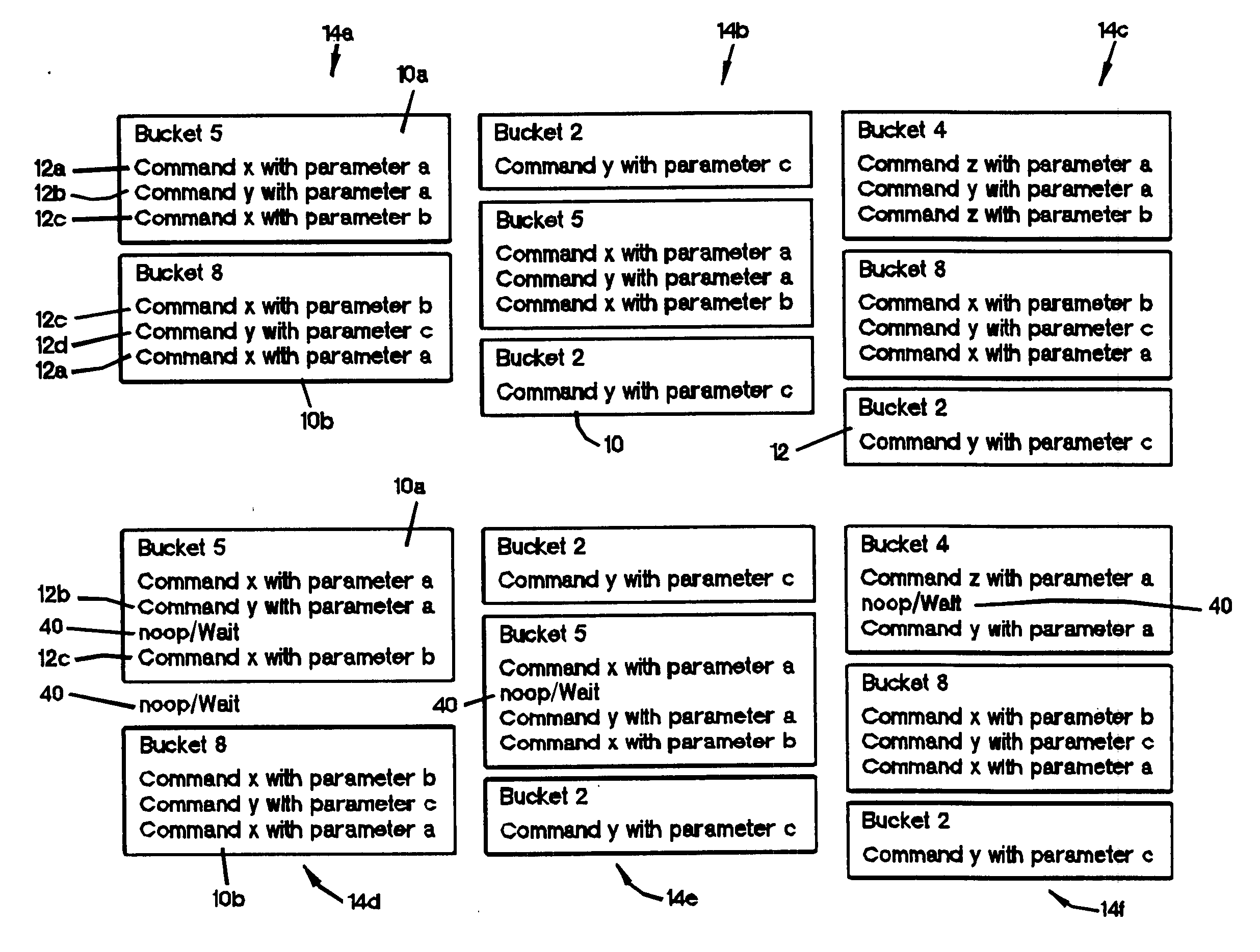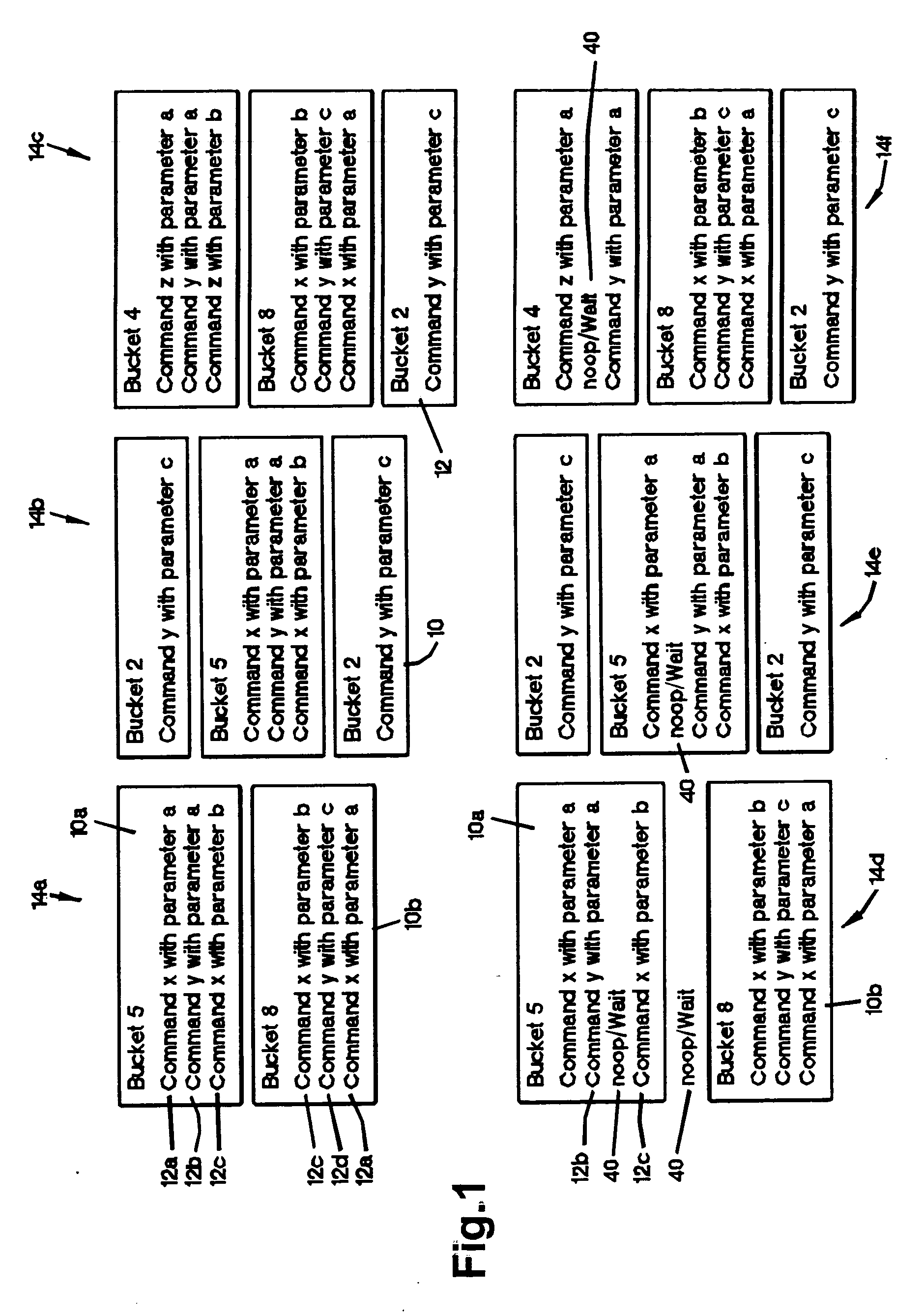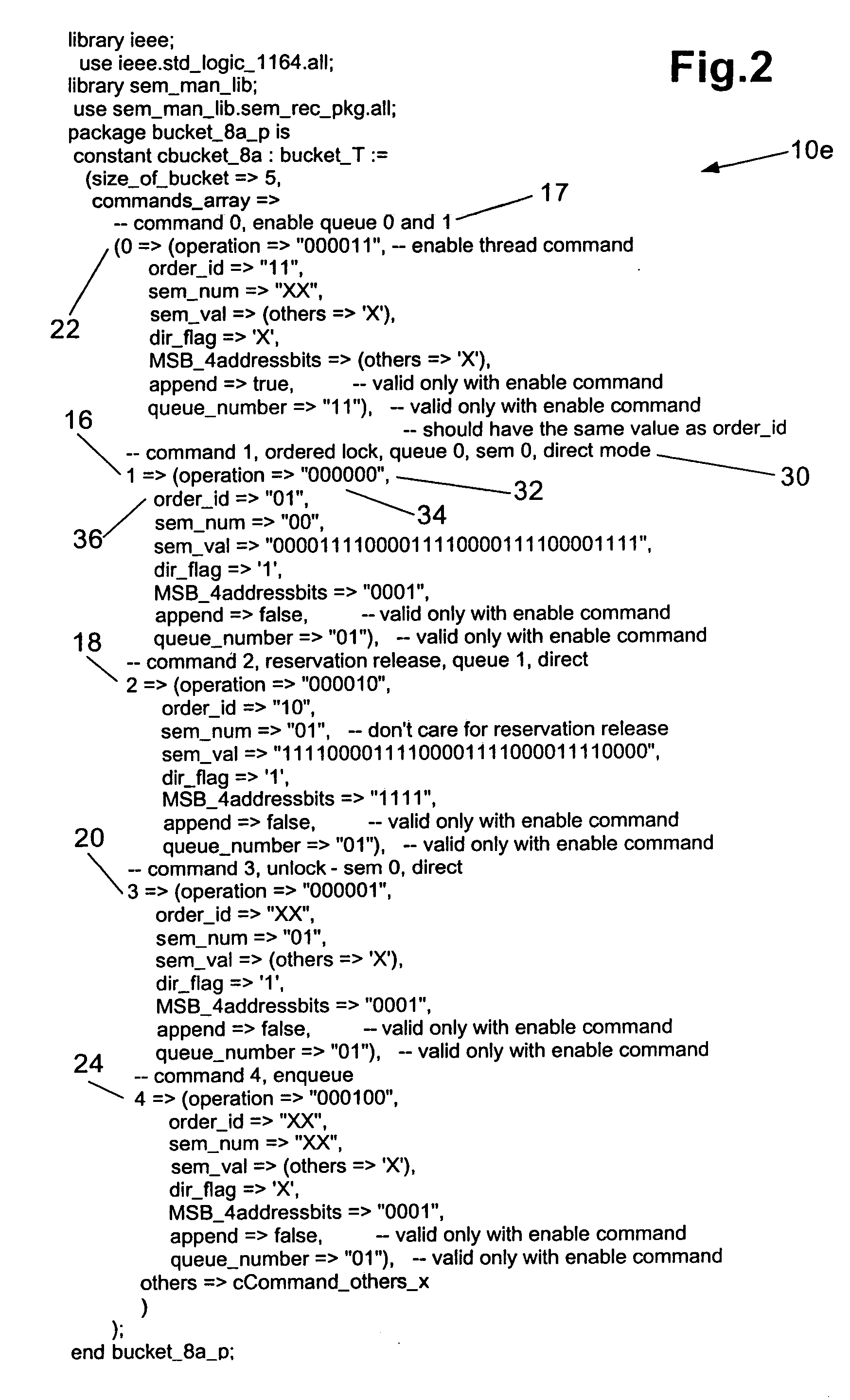Buckets of commands in a multiprocessor-based verification environment
a multiprocessor and verification environment technology, applied in the field of computer systems, can solve the problems of multiprocessor systems presenting verification problems, increasing the complexity of desired test cases, and time-consuming writing of hard coded scenarios
- Summary
- Abstract
- Description
- Claims
- Application Information
AI Technical Summary
Benefits of technology
Problems solved by technology
Method used
Image
Examples
Embodiment Construction
[0010] Where a multiprocessor system is comprised of a plurality of processors, and each processor comprises a plurality of threads, all of which are independent of each other in their operation, the typical computer central manager unit randomly dispatches commands to each thread. In this case, the central manager will randomly select processors, and the testing of the system will thereby also be random.
[0011] In order to test corner cases through the random generation and selection of threads through the central manager, large numbers of thread command series must be generated and routed through the central manager. However, in order to combine and run more than one command as a series of commands in a sequential fashion, “rules” must be observed or an undesired command sequence may produce test results with little or no value, or may even abort the test process. For example, in a prior art pure random generation system, the prior art generator may be asked to generate a sequence...
PUM
 Login to View More
Login to View More Abstract
Description
Claims
Application Information
 Login to View More
Login to View More - R&D
- Intellectual Property
- Life Sciences
- Materials
- Tech Scout
- Unparalleled Data Quality
- Higher Quality Content
- 60% Fewer Hallucinations
Browse by: Latest US Patents, China's latest patents, Technical Efficacy Thesaurus, Application Domain, Technology Topic, Popular Technical Reports.
© 2025 PatSnap. All rights reserved.Legal|Privacy policy|Modern Slavery Act Transparency Statement|Sitemap|About US| Contact US: help@patsnap.com



